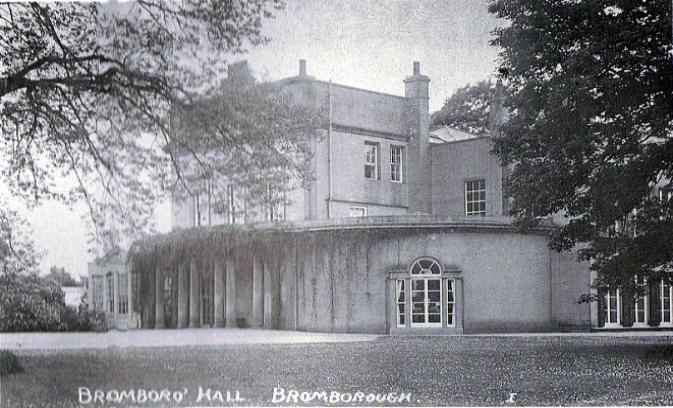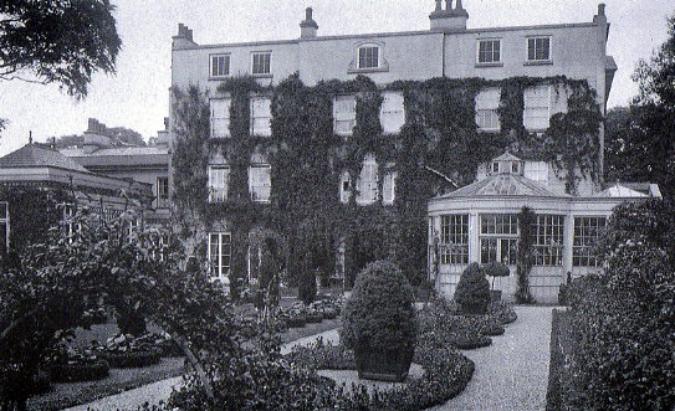






| MENU |


Bromborough Hall
The great building was an integral part of Bromborough's history, built in 1617 by the powerful and rich
Mainwaring family and centred in heart of the village. The Hall was a large stone building which had been
refurbished many times over the centuries which gave rise to its part Old English, part Georgian look.
The entrance opened up into a large room with a winding stone staircase leading up to the minstrels
gallery. At the back of the hall the walls were draped with wisteria leading through to a large
conservatory which was a late edition to the property. The gardens were set out in 13 acres of prime
lawn, with heavy vegetation, exotic plants, large trees and beautifully tended flowers. Sir William even
boasted that his garden probably contained the most expensive lawns and largest trees in Wirral.
The house had many styles of decor within its numerous rooms and during a refurbishment in the 19th
century, a priest hole was uncovered in a void behind one of the walls. A priest hole was a hiding place
for priests built into many of the principal Catholic houses in England during the period when Catholics
were persecuted by law in England, from the beginning of the reign of Elizabeth I. The priest hole was
subsequently removed during the refurbishment process.
The grand hall was occupied by the Mainwaring family from its built date of 1617 until 1850. The last
occupant was Sir William Forwood in 1898, who was incidentally the founder of the Liverpool Overhead
Railway. The Manor house was sadly demolished in 1932 by the Local Authority to make way for shops.
The hall once stood near to St Barnabas church close to Royal Oak Inn today.
The great building was an integral part of Bromborough's history, built in 1617 by the powerful and rich
Mainwaring family and centred in heart of the village. The Hall was a large stone building which had been
refurbished many times over the centuries which gave rise to its part Old English, part Georgian look.
The entrance opened up into a large room with a winding stone staircase leading up to the minstrels
gallery. At the back of the hall the walls were draped with wisteria leading through to a large
conservatory which was a late edition to the property. The gardens were set out in 13 acres of prime
lawn, with heavy vegetation, exotic plants, large trees and beautifully tended flowers. Sir William even
boasted that his garden probably contained the most expensive lawns and largest trees in Wirral.
The house had many styles of decor within its numerous rooms and during a refurbishment in the 19th
century, a priest hole was uncovered in a void behind one of the walls. A priest hole was a hiding place
for priests built into many of the principal Catholic houses in England during the period when Catholics
were persecuted by law in England, from the beginning of the reign of Elizabeth I. The priest hole was
subsequently removed during the refurbishment process.
The grand hall was occupied by the Mainwaring family from its built date of 1617 until 1850. The last
occupant was Sir William Forwood in 1898, who was incidentally the founder of the Liverpool Overhead
Railway. The Manor house was sadly demolished in 1932 by the Local Authority to make way for shops.
The hall once stood near to St Barnabas church close to Royal Oak Inn today.


| Bromborough Hall Front View |